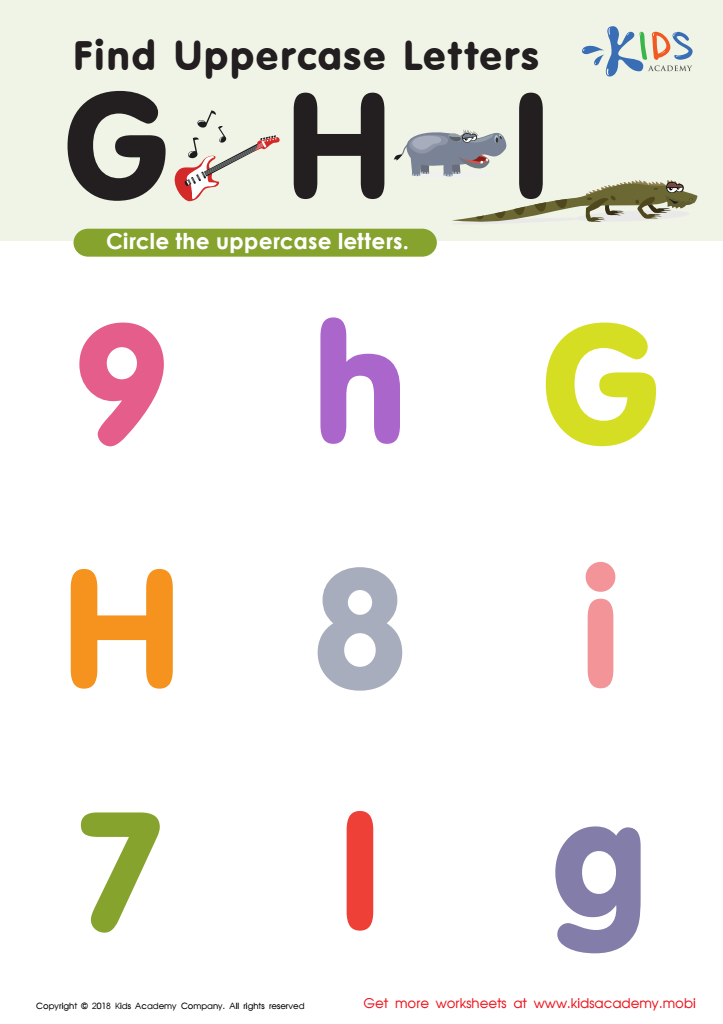Alphabet familiarity Normal Uppercase Letters Worksheets for 5-Year-Olds
4 filtered results
-
From - To
Explore our engaging Alphabet Familiarity Normal Uppercase Letters Worksheets designed specifically for 5-year-olds! These interactive resources help young learners recognize and differentiate uppercase letters through fun activities tailored to enhance their cognitive development. Kids will enjoy tracing, matching, and identifying letters while building foundational skills in literacy. Each worksheet promotes familiarity with the alphabet, fostering confidence and early reading abilities. Ideal for both classroom settings and at-home learning, our worksheets cater to various learning styles, ensuring every child can thrive. Start your child's literacy journey today with these exciting and educational materials!


Find Uppercase Letters G, H, and I Worksheet


Find Uppercase Letters Worksheet


Find Uppercase Letters J, K, and L Worksheet


Find Uppercase Letters A, B, and C Worksheet
Alphabet familiarity with uppercase letters is crucial for 5-year-olds as it lays the foundation for literacy skills essential for academic success. Mastering uppercase letters helps children recognize and differentiate between distinct letter shapes, enhancing their reading and writing abilities. Early engagement with uppercase letters cultivates phonemic awareness as children learn to associate letters with their corresponding sounds, a vital step in developing effective decoding skills when they begin reading.
Additionally, familiarity with uppercase letters supports fine motor skills through writing practice, allowing children to gain confidence in forming letters, which is an essential component of writing proficiency. As they become adept at identifying and using uppercase letters, students are also introduced to fundamental concepts of language, such as punctuation and sentence structure.
For parents and teachers, fostering this familiarity at an early age ensures that children will not only be prepared for future literacy challenges but also develop a positive attitude towards learning. Educational activities, such as letter games and interactive reading, support this skill development while making learning enjoyable. Therefore, investing in alphabet familiarity is key to nurturing a love for reading and writing that can last a lifetime.
 Assign to My Students
Assign to My Students















